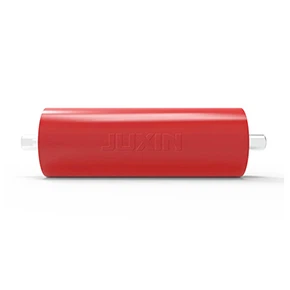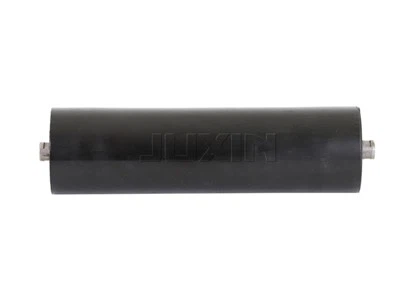The three core criteria for evaluating the quality of rollers:radial runout, rotational flexibility and axial displacement-have a direct impact on the stability, lifespan, and system efficiency of rollers.
1. Radial Runout of Rollers
Definition: Radial runout refers to the maximum deviation distance (typically measured in millimeters or microns) between the outer surface of the roller and its theoretical central axis during rotation. This parameter reflects the roundness error and manufacturing precision of the roller.
Detection Method: After securely mounting the roller, rotate it at high speed and measure the maximum offset of the outer surface using a dial indicator.
Impact on Quality:
Belt Damage: Excessive radial runout can cause belt vibration and misalignment, leading to increased edge wear and potential tearing.
Noise and Energy Consumption: Uneven pulsation increases friction resistance, resulting in higher motor loads, increased energy consumption, and abnormal noise levels.
Reduced Lifespan: Long-term vibration accelerates bearing wear, thereby shortening the overall service life of the roller.
Standard Requirements: For high-quality rollers, radial runout should not exceed 0.5 mm under normal operating conditions or 0.2 mm under high-speed or heavy-duty conditions.

2. Rotational Flexibility
Definition: Rotational flexibility refers to the ability of the roller to rotate freely and smoothly under no-load or low-resistance conditions. This characteristic primarily depends on the quality of the bearings, sealing performance, and assembly accuracy.
Detection Method: Manually rotate the roller and observe whether it operates smoothly without noticeable sticking or abnormal sounds.
Impact on Quality:
Friction Resistance: Poor flexibility of the roller will increase the belt's running resistance, thereby leading to higher energy consumption. Research indicates that a 10% increase in resistance may result in a 5% to 8% rise in energy consumption.
Local Wear: Stuck rollers can cause sliding friction with the belt, potentially leading to belt surface wear or high-temperature burnout.
Bearing Life: Reduced flexibility is often caused by low-quality bearings or overly tight seals, which accelerates bearing failure.
Standard Requirements: The resistance of high-quality idlers should be less than 0.5 N·m during idle operation, and there should be no noticeable inertia arrest after rotation ceases.

3. Axial Movement
Definition: Axial displacement refers to unintended movement of the idler along its axis during operation, primarily caused by excessive bearing clearance, unstable shaft-end fixation, or seal failure.
Detection Method: Secure one end of the roller, manually push and pull the other end, and measure the maximum moving distance.
Impact on Quality:
Seal Failure: Excessive axial displacement can damage the seal structure, allowing dust and water vapor to intrude into the bearing chamber, causing lubrication failure and rust.
Belt Deviation: Roller misalignment can alter the direction of belt force, increasing the risk of deviation.
Structural Loosening: Long-term displacement may lead to the detachment of shaft-end fasteners and, in severe cases, roller disintegration.
Standard Requirements: For high-quality idlers, axial displacement should not exceed 1 mm under ordinary working conditions or 0.5 mm under high-speed/heavy-duty conditions.

Comprehensive Impact and Quality Assessment
1. Radial runout serves as a direct indicator of manufacturing precision, determining the "smoothness" of the roller's operation.
2. Flexibility reflects the reliability of the bearing and sealing systems, influencing the "low-resistance operational capability" of the roller.
3. Axial displacement demonstrates the rationality of structural design, ensuring the "long-term stability" of rollers.
Typical Issues with Inferior Rollers:
High radial runout → belt jittering and edge wear.
Low flexibility → increased energy consumption and belt scratching.
Significant axial displacement → oil leakage and premature bearing failure.
By rigorously monitoring these three indices, high-performance rollers can be effectively identified, reducing equipment failure rates, extending the lifespan of belts and rollers, and ensuring the economical and reliable operation of bulk material transportation systems.






